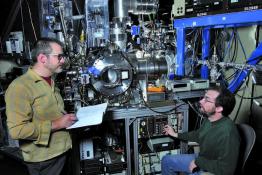Measurement of air pollutants in the troposphere
Issue 343 | Page 59 | Published Dec 2011
Description
This article describes the principles, applications and performances of methods to measure gas-phase air pollutants that either utilise passive or active sampling with subsequent laboratory analysis or involve automated in situ sampling and analysis. It focuses on air pollutants that have adverse impacts on human health (nitrogen dioxide, carbon monoxide, sulfur dioxide and benzene), vegetation (ozone) or climate change (ozone, carbon dioxide, methane and nitrous oxide). It begins with an explanation of why air pollutants are measured and concludes with prospects for the future and an illustration of recent trends in air pollutants derived from road traffic recorded in central London.
More from this issue
Perfluorocarbons (PFCs) are fully fluorinated hydrocarbons that are used as blood plasma substitutes, in medical imaging and in the cosmetics...
Chemicals entering the atmosphere come from a number of sources but, in broad terms, are either from human activity or from the biosphere (natural...
This article describes the work being undertaken to make more use of supercritical carbon dioxide as a green solvent. It discusses how the use of...


